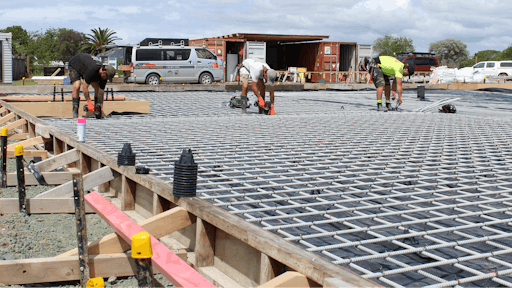Composites: The Future of Lasting Building And Construction Products
Composites: The Future of Lasting Building And Construction Products
Blog Article
Opening the Ecological Benefits of Recycled Compounds in Building and Design
In the realm of building and construction and layout, the application of recycled composites holds significant promise for boosting sustainability practices and lowering environmental influence (composites). By including these cutting-edge materials, there is a potential to address essential concerns such as waste minimization, energy preservation, and a decline in carbon impact. The shift towards a much more sustainable future in these industries pivots on unlocking the full capacity of recycled compounds. This discussion will certainly discover the complex benefits and difficulties connected with incorporating recycled composites right into construction and layout, supplying a glance right into the transformative opportunities that lie in advance.

Environmental Effect Reduction
The decrease of environmental influence via the use of recycled compounds in construction and design plays a crucial duty in lasting practices. By including recycled composites right into structure products, the building and construction sector can considerably reduce its carbon footprint and add to an extra environmentally friendly future. These sustainable products, made from repurposed plastics, wood fibers, or other recycled elements, offer a practical alternative to traditional building and construction materials without compromising on quality or resilience.
Recycled compounds help divert waste from land fills and minimize the requirement for drawing out resources, therefore conserving natural deposits. Furthermore, the production process of these compounds commonly consumes less energy and gives off less greenhouse gases contrasted to producing virgin products (composites). This change in the direction of utilizing recycled composites not only decreases ecological injury yet additionally promotes a circular economy by motivating the reuse of products that would otherwise be thrown out
Waste Minimization
With an emphasis on reducing waste in construction and layout, the integration of recycled compounds supplies a lasting option to lower ecological influence. Waste minimization is a vital element of lasting techniques, and the usage of recycled compounds provides a possibility to achieve this objective efficiently. By making use of materials that have currently served their preliminary function, such as recycled plastics or recovered timber fibers, the building and construction and style industries can considerably decrease the amount of waste created and sent to landfills.
Recycled compounds have the prospective to divert considerable quantities of waste from typical disposal approaches, contributing to a more circular economy where sources are used successfully. Furthermore, the production procedure of recycled compounds commonly takes in much less energy and generates fewer discharges contrasted to virgin materials, better decreasing the ecological impact of construction and style jobs.
Applying waste minimization strategies through the incorporation of recycled composites not just aids in saving natural deposits however additionally promotes a more sustainable strategy to structure and creating for a greener future.
Power Preservation
Incorporating recycled composites not only decreases waste in building and construction and style but also plays an essential function in boosting power conservation practices within the sector. The use of recycled composites in building and construction can significantly contribute to energy preservation via numerous means. By promoting the usage of recycled composites in building and layout, the market can make significant strides in the direction of achieving power effectiveness and minimizing its carbon impact, inevitably contributing to a more lasting constructed environment.
Carbon Footprint Reduction
Enhancing sustainability practices via the application of recycled compounds in construction and style substantially decreases the carbon footprint of the industry. By including recycled products right into the manufacturing of composites, the need for virgin resources reduces, leading to lower power intake and greenhouse gas exhausts related to conventional manufacturing processes. This decrease in carbon impact is vital in combating environment modification and advertising an extra eco-friendly technique to building and style.
The carbon impact decrease accomplished with the fostering of recycled composites straightens with the worldwide push towards sustainable techniques and the decrease of industrial discharges. Inevitably, by focusing on the assimilation of recycled compounds, the market can make considerable strides in reducing its carbon footprint and contributing to an extra lasting future.
Sustainable Future
The combination of recycled composites in construction and layout not only addresses prompt ecological issues pop over to this site yet likewise lays a solid structure for a sustainable future in the market. By incorporating recycled compounds into building materials and items, the construction and style sectors can significantly minimize their reliance on virgin sources, leading to a much more circular economic situation. This shift in the direction of sustainability is important for mitigating the ecological influence of conventional construction techniques, which typically cause high degrees of waste generation and source exhaustion.

Final Thought
To conclude, recycled composites provide considerable environmental benefits in construction and design by minimizing environmental impact, reducing waste, saving energy, decreasing carbon footprint, and promoting a sustainable future. Embracing the usage of recycled compounds can add to a more environmentally-friendly approach to structure and layout, inevitably resulting in a more sustainable and greener future for all.
The reduction of ecological impact via the usage of recycled composites in construction and design plays an essential role in sustainable techniques.With an emphasis on lessening waste in building and design, the integration of recycled composites offers a lasting option to decrease environmental impact. By advertising the usage of recycled composites in building and construction and style, the market can make significant strides in the direction of attaining energy efficiency and lowering its carbon impact, eventually adding to a much more lasting built setting.

Report this page